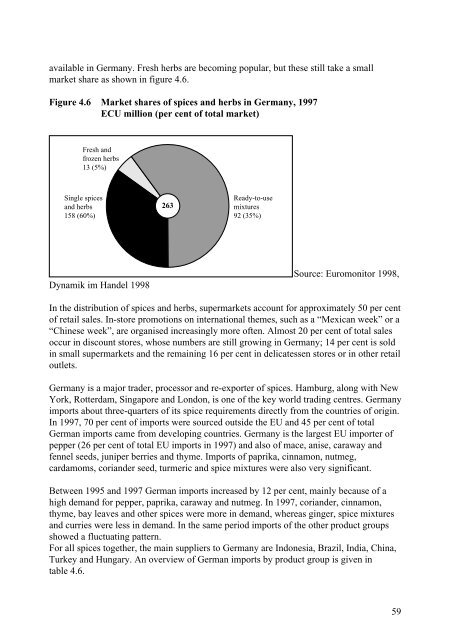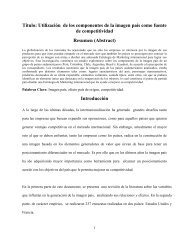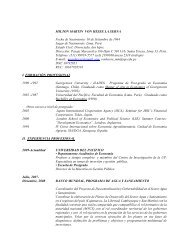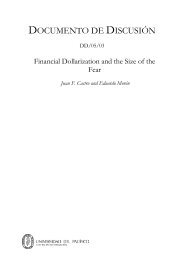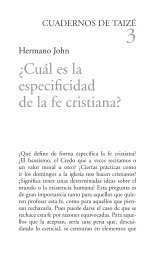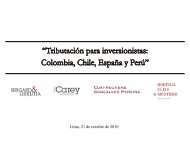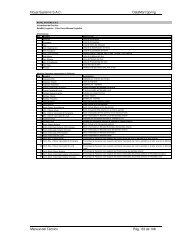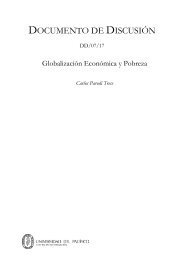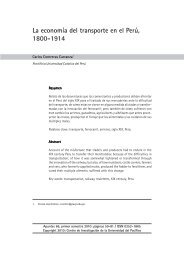Spices and Herbs
Spices and Herbs
Spices and Herbs
You also want an ePaper? Increase the reach of your titles
YUMPU automatically turns print PDFs into web optimized ePapers that Google loves.
available in Germany. Fresh herbs are becoming popular, but these still take a small<br />
market share as shown in figure 4.6.<br />
Figure 4.6 Market shares of spices <strong>and</strong> herbs in Germany, 1997<br />
ECU million (per cent of total market)<br />
Fresh <strong>and</strong><br />
frozen herbs<br />
13 (5%)<br />
Single spices<br />
<strong>and</strong> herbs<br />
158 (60%)<br />
263<br />
Ready-to-use<br />
mixtures<br />
92 (35%)<br />
Dynamik im H<strong>and</strong>el 1998<br />
Source: Euromonitor 1998,<br />
In the distribution of spices <strong>and</strong> herbs, supermarkets account for approximately 50 per cent<br />
of retail sales. In-store promotions on international themes, such as a “Mexican week” or a<br />
“Chinese week”, are organised increasingly more often. Almost 20 per cent of total sales<br />
occur in discount stores, whose numbers are still growing in Germany; 14 per cent is sold<br />
in small supermarkets <strong>and</strong> the remaining 16 per cent in delicatessen stores or in other retail<br />
outlets.<br />
Germany is a major trader, processor <strong>and</strong> re-exporter of spices. Hamburg, along with New<br />
York, Rotterdam, Singapore <strong>and</strong> London, is one of the key world trading centres. Germany<br />
imports about three-quarters of its spice requirements directly from the countries of origin.<br />
In 1997, 70 per cent of imports were sourced outside the EU <strong>and</strong> 45 per cent of total<br />
German imports came from developing countries. Germany is the largest EU importer of<br />
pepper (26 per cent of total EU imports in 1997) <strong>and</strong> also of mace, anise, caraway <strong>and</strong><br />
fennel seeds, juniper berries <strong>and</strong> thyme. Imports of paprika, cinnamon, nutmeg,<br />
cardamoms, cori<strong>and</strong>er seed, turmeric <strong>and</strong> spice mixtures were also very significant.<br />
Between 1995 <strong>and</strong> 1997 German imports increased by 12 per cent, mainly because of a<br />
high dem<strong>and</strong> for pepper, paprika, caraway <strong>and</strong> nutmeg. In 1997, cori<strong>and</strong>er, cinnamon,<br />
thyme, bay leaves <strong>and</strong> other spices were more in dem<strong>and</strong>, whereas ginger, spice mixtures<br />
<strong>and</strong> curries were less in dem<strong>and</strong>. In the same period imports of the other product groups<br />
showed a fluctuating pattern.<br />
For all spices together, the main suppliers to Germany are Indonesia, Brazil, India, China,<br />
Turkey <strong>and</strong> Hungary. An overview of German imports by product group is given in<br />
table 4.6.<br />
59


